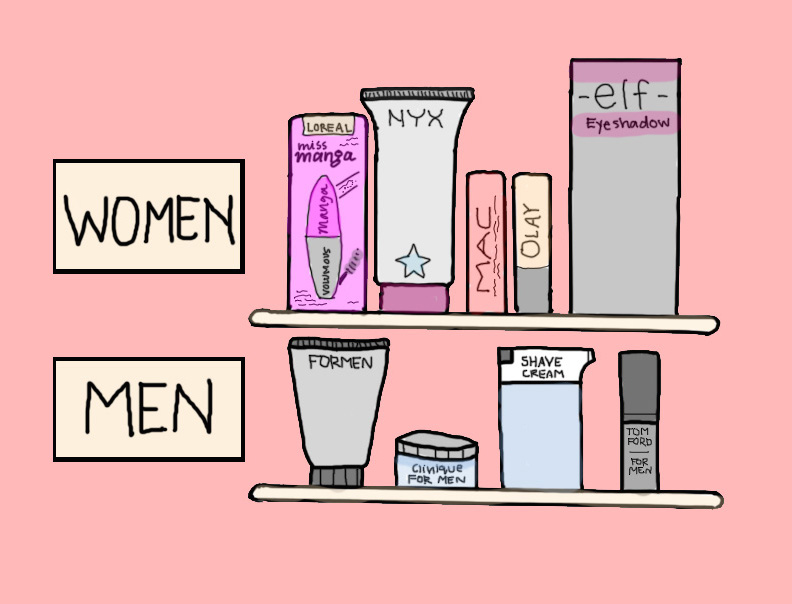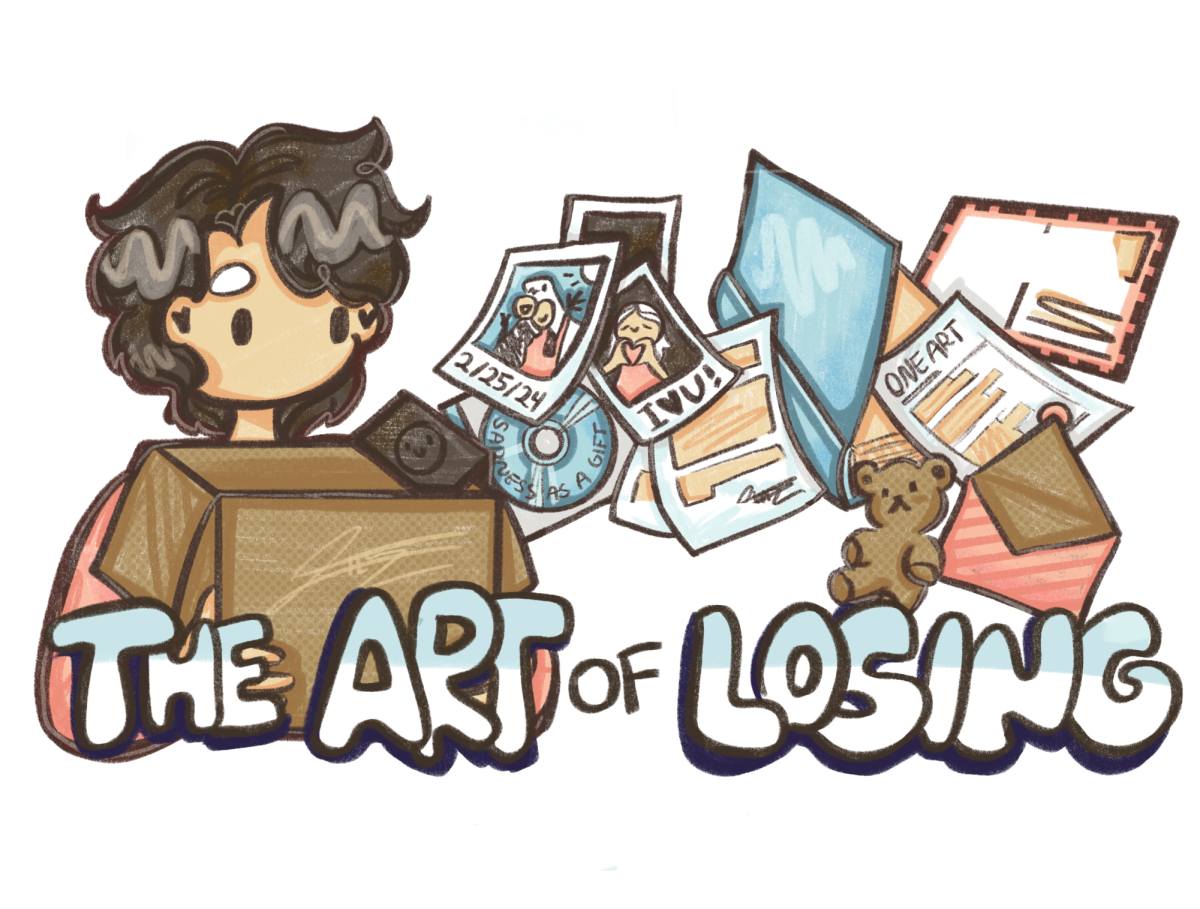The irony shades black-and-white; while arguing that beauty doesn’t matter, that we are all individually, uniquely, singularly beautiful on the inside, those sayings inevitably shape their own failure by nature of their content. They strive to convince us that we should not care about beauty because it doesn’t matter — and, obviously, it shouldn’t. Yet the opposite is unflinchingly true: Chasing after beauty standards is dramatically apparent in our society.
Because we have all also heard the stories of women undergoing plastic surgery for increased job opportunities. We have heard of girls who suffer from anorexia and related eating disorders to achieve the ideal female thinness, and of the countless hours young girls will spend in front of a bathroom mirror before Prom or a date or even school, applying the perfect accent of eyeliner, the last touch of golden bronzer. And with each of these instances, it is hard not to suspect and recognize another common thread: the unsettling ratio of females to males involved.
But it’s 2016 now, and the voices questioning all kinds of gender gaps in our society have only gotten louder — especially with Hillary Clinton’s historic nomination to presidential candidacy by the Democratic Party. Individuals like Ursula Burns, the CEO of multibillion dollar corporation Xerox, and First Lady Michelle Obama have taken active steps to challenge gender imbalance in the social, economic and political worlds. However, as we fight for gender equalization today, we cannot forget that the strongest symptoms of gender stereotypes manifest themselves in the world of beauty.
And there is a huge imbalance in the way men and women treat beauty standards, and how each gender is, in turn, affected by said standards. There is little question that beauty standards exist for both genders, but we as a society do not place the same importance on these beauty standards for both genders. In a survey of 272 MVHS students, 66 percent of students agreed that the importance of beauty is different depending on gender, and out of 274 students, 72 percent of responders believe that beauty should matter equally for males and females.
However, the discrepancy is nevertheless apparent in the cosmetic industry. Female makeup products are often given glamorous names, such as Maybelline’s “Lash Sensational” mascara, in contrast to men’s more medically-oriented and subtly marketed brands. For example, feminine makeup brand NARS offers a “Radiant Creamy” concealer, while male makeup brand Formen merely names its concealer “Formen’s concealer” — and advertises the cosmetic product as an “essential part of male grooming.”
Grooming. Wearing concealer, Formen seems to say, is basically like taking a shower or washing your hands; you’re just cleaning yourself. The restrained name of Formen’s concealer also tries its best to refrain from being too out there, too loud, too conspicuous. And Formen’s Invisible Blotting Powder is “100 percent translucent and undetectable,” as if male makeup were such an embarrassing commodity.
Yet Formen isn’t alone; most male makeup brands are quick to make the distinction between male and female products, consciously avoiding “colors and terminology that are remotely girly,” writes journalist Brad Tuttle for a Time article. The words “power” and “boost” can also be found in several male cosmetic products — men’s skin care company Jack Black offers makeup products with names like “Repeat Defender” and “Protein Booster Skin Serum.”
If American society really places the same emphasis on grooming and achieving a particular standard of physical appearance similarly in both genders, why is the marketing for male makeup products so much more subdued?
Additionally, according to a 2014 report published by the American Society of Plastic Surgeons, 87 percent of total cosmetic surgical procedures conducted by ASPS certified surgeons that year were on female patients, while the remaining 13 percent of cosmetic surgeries were performed on male patients. Definitions of what “beautiful” means for each gender have been carved out, but these definitions take a much greater toll on women than men.
The correlation between attractiveness and income in the context of gender is also glaring, explains University of Chicago doctoral candidate Jaclyn Wong and University of California, Irvine Associate Professor of Sociology Andrew Penner, in an April 2016 research paper. The two sociologists examined data from a national study of over 14,000 individuals and found that “attractive individuals earn roughly 20 percent more than people of average attractiveness.” Yet this gap is significantly diminished when factors like grooming — applying makeup and styling hair — are taken into consideration. In Wong’s and Penner’s words: Grooming habits account “for the entire attractiveness premium” in women, but “only half the premium for men.” Another way of putting it: Investing effort into appearance statistically matters more for women than for men.
As a result, women often face elevated levels of social and financial pressure to integrate particular grooming habits into their daily routines. These pressures play a paramount role in the female quest for beauty, because if simply donning powder concealer and eyeshadow can help women attain higher incomes, who would not?
If simply donning powder concealer and eyeshadow can help women attain higher incomes, who would not?
Beauty is inherently tied to social construct and is not as timeless as we may think, journalist David Robson further argues in an article for the BBC. In a 2015 experiment conducted by assistant professor Haiyang Yang from the Johns Hopkins Carey Business School and Leonard Lee from the National University of Singapore, the researchers found that the more we are exposed to others’ standards of beauty, the more our own personal concepts of beauty change and shift to conform to the status quo. This kind of herd mentality, however, suggests that our sense of aesthetics is not immutable, despite the existence of scientific rationale explaining why we find particular physical traits — such as symmetry — attractive. Fluctuations in beauty standards over time also indicate a certain fluidity in what we find beautiful.
While this kind of herd behavior means that we are especially susceptible to media portrayal of unrealistic body types — think Victoria’s Secret’s “Perfect Body” Campaign — it also offers an encouraging prospect: What we deem beautiful is not strictly fixed, so we retain, to an extent, the ability to mold and alter socially accepted beauty standards.
Ultimately, the value we place today on physical appearance in each gender is far from equal.
And even though male beauty standards do exist, the importance we place upon males for reaching such standards is not as potent as the social pressure on females. Male beauty standards typically exist in the form of hypermasculinity, the emphasization of stereotypical male features, such as aggressive and dominating behaviors, physical strength and sexuality. From the brawny warriors in Ancient Greece to Michael Phelps’s Under Armour ad, in which Phelps lifts weights and huddles in an ice bath, masculinity is imposed on males through selective media and stereotypes of the public.
Yet in a 2012 British research study, researchers asked 40 males and 40 females to adjust digital representations of male and female body shapes, until they arrived at an ideal body type for each sex. This final body type for the participant’s own sex was then contrasted against his or her own body. For females, women and men preferred a smaller waist-to-hip ratio and bigger breasts, along with an overall slender and willowy form. The “ideal” body shape for women, according to men, had a Body Mass Index (BMI) of 18.2 — considered underweight — whereas the current United States BMI for women is actually 26.5 — considered overweight — resulting in a shocking difference of 8.3. As for the men, the BMI average of the ideal male type, 24.54, is extremely close to the United States’ actual male average of 26.6. Essentially, while the desired male and female body types both differed from that of the participants themselves, the body shape and BMI of males was already closer to the ideal male type. This suggests that males are held to a “lower,” or more achievable and realistic standard than women, and are on a much more relaxed leash — adhering to beauty standards matters less for men than for women.
Our beauty standards should positively align with the changing values and trends of our society, and if we’re pushing for gender equalization, we must remember the gender gap in standards of beauty.
In the past few decades, women have made long, historical strides in the United States, and gender roles have never been more balanced in American history — a Pew Research Center article announced, in 2013, that women were the “sole or primary breadwinner” for four in 10 households in America — a figure that quadrupled since 1960. But modern beauty standards are a product of social construct, and the imbalanced pressure to achieve such standards is a fundamentally obscure reflection of our social values. Our beauty standards should positively align with the changing values and trends of our society, and if we’re pushing for gender equalization, we must remember the gender gap in standards of beauty. We have the power to condition ourselves to treat beauty equally in both genders, and to place the same level of import on beauty standards in both females and males.





















